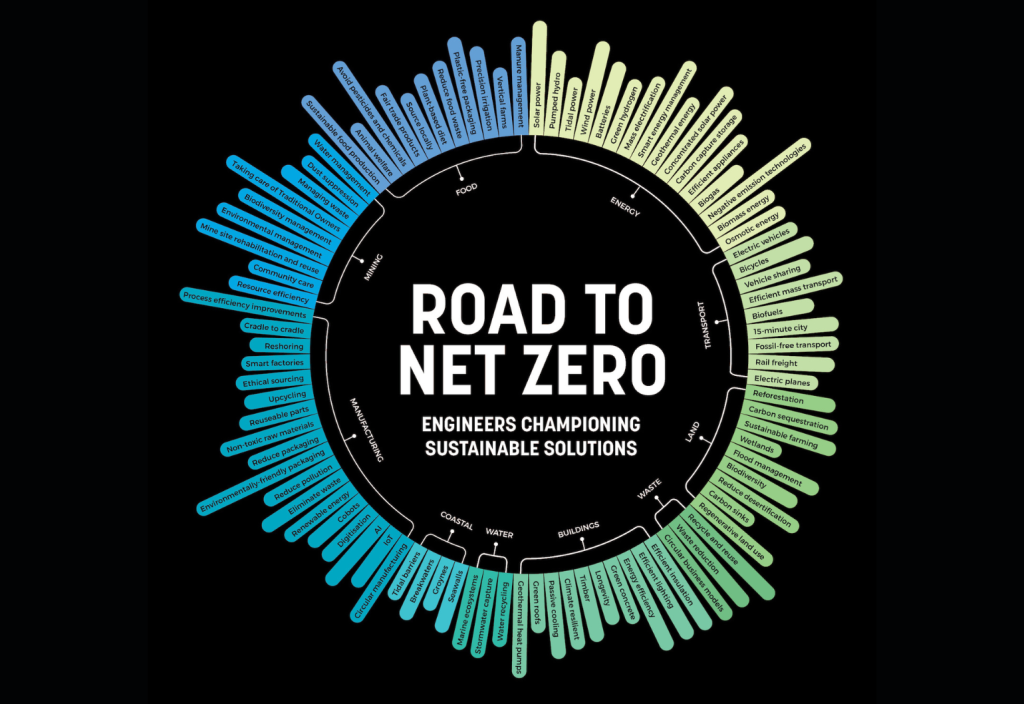Saul Griffith believes engineers are working at one of the most exciting points in history and we must shift to sourcing all our energy needs from renewable electricity.
Inventor and engineer Saul Griffith says there’s very little reason to be optimistic about what we’ve done to the planet. Despite that, when it comes to climate change, he sees the need for proactive, positive stories.
“I am naturally an optimist and I think there are tentative reasons to be optimistic,” he tells create.
Described by The New Yorker as “an extraordinarily innovative engineer who is trying to think his way around the limits of innovation,” Griffith is the founder of Otherlab, a San Francisco-based research and design lab devoted to creative solutions in the fields of renewable energy and robotics.
After decades working in the US, he has recently returned to Australia, where he hopes the country can go from a climate laggard to a world-leading example of how sustainable policy can improve people’s lives for the better.
Griffith’s plan to remake the nation’s energy landscape for a sustainable future is certainly an inspiring and forward-thinking one. His plan for a green future is a simple one: electrify everything.
And he believes the returns on an economy-wide shift to sourcing all our energy needs from renewable electricity will be remarkable.
“Electrification is going to be the majority of the solution outside of land use and agriculture. We just need to focus the mind on that, and build the policies and the technologies for that,” he says. “You could supply nearly everyone in the world with an improved quality of life, do it with zero emissions, and do it on time to beat a two-degree target.”
Potential world leader
Griffith identifies Australia as a potential world-leader when it comes to decarbonising our economy.
“Australia is unique globally because we are such an enormously out-sized primary producer — our peer nations are like Saudi Arabia, meaning we export multiples of the amount of energy we use in a domestic economy, so that makes us weird,” he explains.
“The other thing that’s unique about Australia is low population density, mild climate, enormous land mass, best-in-class-in-the-world wind and solar resources. So we have the easiest pathway to fix climate change of any country in the world, without doubt. If you can’t solve it in Australia, you can’t solve it anywhere.”
Griffith nominates a few areas in which Australia should be focusing its attention, noting that the nation already has a high take-up rate of rooftop solar cells.
“You need a similar set of policies around vehicle charging infrastructure, you need a similar set of policies around converting or building heat from natural gas to electric heat pumps, you need a similar set of policies around installing a profusion of batteries,” he says.
“Batteries, batteries, everywhere. Whether it’s on the side of your house, whether it’s in your car, whether it’s on the distribution grid, we’ll need a lot of storage.”
As an engineer, Griffith understands how crucial other engineers will be to making the changes needed.
“I think becoming an engineer is an optimistic act. What is the job description of an engineer at large? Making machines that improve people’s lives. And that’s what we all sign up for. Here’s the biggest opportunity to do that ever,” he says.
“We get to work at one of the most exciting points in history. We get to drive the transition. Are you telling me that the most important job in Australia for the next decade is being an engineer? That’s me. I love that.”
What about energy storage?
A predominantly renewable grid cannot operate without storage due to stability issues. Storage can help enhance grid stability by coping with intermittent supply, frequency changes, voltage support, supply and demand fluctuations and more.
When the Hornsdale Big Battery proved to be a great success, batteries finally appeared on the radar of those in the energy space. “That was a milestone, a peg in the ground in terms of proving what battery technology could do, and be scaled up to achieve,” says Conan Jones, engineer and Business Development Manager with FIMER Australia when he spoke with create earlier this year.
Late last year, Australian engineers announced development of the world’s first integrated hybrid hydrogen battery that combines with rooftop solar to deliver sustainable, reliable and renewable energy for residential and commercial properties.
LAVO is a hydrogen battery system that works by drawing electricity from a rooftop solar array, using an electrolyser to split water into hydrogen and oxygen, storing the hydrogen in a solid state in silver hydride tanks, before dispatching this as electricity via a fuel cell when needed to generate electricity.
Dr Saul Griffith is a speaker at the Climate Smart Engineering conference. See the full line-up here.
